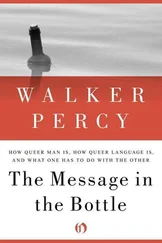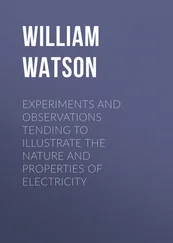Mark Changizi - Harnessed - How Language and Music Mimicked Nature and Transformed Ape to Man
Здесь есть возможность читать онлайн «Mark Changizi - Harnessed - How Language and Music Mimicked Nature and Transformed Ape to Man» весь текст электронной книги совершенно бесплатно (целиком полную версию без сокращений). В некоторых случаях можно слушать аудио, скачать через торрент в формате fb2 и присутствует краткое содержание. Год выпуска: 2011, Издательство: Perseus Books Group, Жанр: Старинная литература, на английском языке. Описание произведения, (предисловие) а так же отзывы посетителей доступны на портале библиотеки ЛибКат.
- Название:Harnessed: How Language and Music Mimicked Nature and Transformed Ape to Man
- Автор:
- Издательство:Perseus Books Group
- Жанр:
- Год:2011
- ISBN:нет данных
- Рейтинг книги:5 / 5. Голосов: 1
-
Избранное:Добавить в избранное
- Отзывы:
-
Ваша оценка:
- 100
- 1
- 2
- 3
- 4
- 5
Harnessed: How Language and Music Mimicked Nature and Transformed Ape to Man: краткое содержание, описание и аннотация
Предлагаем к чтению аннотацию, описание, краткое содержание или предисловие (зависит от того, что написал сам автор книги «Harnessed: How Language and Music Mimicked Nature and Transformed Ape to Man»). Если вы не нашли необходимую информацию о книге — напишите в комментариях, мы постараемся отыскать её.
Harnessed: How Language and Music Mimicked Nature and Transformed Ape to Man — читать онлайн бесплатно полную книгу (весь текст) целиком
Ниже представлен текст книги, разбитый по страницам. Система сохранения места последней прочитанной страницы, позволяет с удобством читать онлайн бесплатно книгу «Harnessed: How Language and Music Mimicked Nature and Transformed Ape to Man», без необходимости каждый раз заново искать на чём Вы остановились. Поставьте закладку, и сможете в любой момент перейти на страницу, на которой закончили чтение.
Интервал:
Закладка:
Our mouths have moving parts, including a powerful and acrobatic tongue; fleshy, maneuverable lips; and a jaw rigged with rock-hard teeth. When we speak, these parts physically interact in complex ways, creating speech events. But speech events are events , and if hits, slides, and rings are the fundamental constituents of physical events, then speech events must also be built from hits, slides, and rings in the mouth. It is no wonder, then, that human speech sounds like hits, slides, and rings. Speech is built from the fundamental constituents of physical events because speech is a physical event. Harnessing would appear to have nothing to do with it.
However, when we speak, our mouth is not simply a container with a tongue, lips, and teeth rattling around. We are not, for example, making hit sounds by tapping our teeth together, or slide sounds by grinding our teeth. When our mouth (in collaboration with our nose, throat, and lungs) makes sounds, it is using mechanisms for sound production that go well beyond the solid-object event atoms—hits, slides, and rings. Although hits, slides, and rings are the most fundamental kinds of physical events (because solid-object events are the most fundamental kind of physical event), they are not the only kinds. There are hosts of others. In particular, there are many physical events that involve the flow of fluid or air. The events in our mouths that make the sounds of speech are events involving airflow, not hits, slides, or rings at all. Airflow events in our mouths mimic hits, slides, and rings, the constituents of solid-object physical events. Our mouths make a plosive by a sudden release of air, not by an actual collision in the mouth. Fricatives are made by the noninstantaneous movement of air through a tight passage; no surfaces in the mouth are actually rubbed against one another. And sonorants are not due to an object vibrating because of a hit or slide; instead, sonorants come from the vocal chords vibrating as air passes by.
Hit, slide, and ring sounds without hits, slides, or rings! What a coincidence! Human speech employs three principal sounds via airflow mechanisms, and yet they happen to sound just like the three principal sounds that happen in events with physical interactions between solid objects. Utterly different mechanisms, but the same resultant sound. That’s too coincidental to be a coincidence. That’s just what harnessing expects: airflow sound-producing mouths settling on just a few sounds for language—the sounds of physical interactions among solid objects.
We must be careful, though. What if airflow mechanisms cannot help but make hit, slide, and ring sounds? Or, more to the point, could it be that the particular airflow mechanisms our mouths are capable of can lead only to sounds like hits, slides, and rings? No. Human mouths are capable of sounds much more varied than the sounds of interacting solid objects. For example, people can mimic many animal sounds—quacks, moos, barks, ribbits, meows, and even human sounds like slurps, burps, sneezes, and yawns—that are constructed out of constituents beyond simple hit, slide, and ring sounds. People can mimic water-related sounds—like splashes, flushes, and drips—none of which are built from hit, slide, and ring sounds. And our airflow sound-mimicking mouths can, of course, mimic airflow sounds—like a soda pop being opened, howling wind, or even breaking wind—also unrelated to the sounds of hits, slides, and rings. People can mimic “hot” sounds, like sizzling bacon and roaring fires. They can even mimic the sounds of revving motorcycles, fax machines, digital alarm clocks, shrilling phones, and alien spaceships, none of which are sounds built from hits, slides, and rings. We see, then, that our airflow sound-producing mouths have a very wide repertoire, and yet speech has employed only the barest of our talents for mimicry, preferring exactly the sounds that occur among interacting macroscopic solid objects. We’re not, therefore, speaking in hits, slides, and rings by default. That we find these in all languages is a sign that we have been harnessed.
In upcoming sections, I will also concentrate on some other kinds of sounds our mouths can produce, but that language tends to avoid; these cases deserve special attention because of their prima facie similarity to sounds we do find in speech. Thus, they can help to answer the question of why speech utilizes some sounds we can make, but not others we can make just as easily. For example, we will see in the upcoming section that although we can make the sounds of wiggly hits and slides, we do not have them as phonemes—and this is consistent with their absence in physics. In the section following that we will see that although we can make slide-hit sounds and hit-slide sounds, only the latter is given the honor of phoneme status in languages (see the section titled “Nature’s Other Phoneme”), consistent with hit-slides being a fundamental sound in physics, while slide-hits are not. And we’ll see in the “Two-Hit Wonder” section that a simple kind of sound (a “beep”) that could exist as a phoneme does not occur in human languages, consistent with its nonprimitive status in physics. More generally, for the next five sections I will brandish a magnifying glass and closely examine the internal structures of hits, slides, and rings, asking whether those same fine structures are found in plosives, fricatives, and sonorants, respectively.
Wiggly Rings
Harmonicas don’t get no respect. They’re cheap (I just found one online for $5), tiny hunks of metal that tend to be played by guys who didn’t finish finishing school. I’ve had a couple of harmonicas for years, and have never understood them: they don’t have all the notes and can only play three chords. Blowing on a harmonica can’t help but sound fairly good, but I have always been frustrated by my inability to get it to do much more. A serious blues harmonica player can create sounds far richer than seems possible from what would appear to be little more than a toy.
A harmonica is deceptive because it is, in a sense, not an entire instrument at all. It is perhaps half an instrument—maybe that’s why they’re so inexpensive. The other half of the instrument is the human hand. That explains why the best harmonica players have hands, and, in addition, tend to move them all about the instrument when playing. This is described as “bending” the notes, and by doing so, the performer can provide a musical dynamism not possible with just the twenty or so notes in the harmonica’s range. The sounds reaching the listener’s ears are not only those coming directly from the harmonica, but also the harmonica sounds that first bounce off objects in the environment before reflecting toward the listener’s ears. For the note-bending blues performer, the hands are the objects the sounds bounce off. Each time a sound bounces off something, some sound frequencies are absorbed more than others, and so the timbre of the sound coming from that reflection is changed. The total timbre depends on the totality of harmonica sounds that reach the ear directly and indirectly from all points in the environment. And we’re able to hear these sound shapes, which is why harmonica benders go to all the trouble of wiggling their hands—and why there are acoustics engineers who worry about the physical layout of auditoriums.
Bending and acoustic reflections don’t just matter in the blues and in concert halls where instruments (including half instruments) are crooning out musical tones. Objects involved in events also croon, or ring. A ring has a complex timbre that informs us of the object’s size, shape, and material. But just like harmonica sounds, rings can get bent by the environmental surroundings. And our brains can decode the bends, and can give us a sense of our surroundings purely on the basis of the shapes of the sounds reaching our ears. The psychologist James J. Jenkins demonstrated in 1985 that blindfolded students, after a little practice, can navigate very well amongst obstacles by utilizing such auditory cues.
Читать дальшеИнтервал:
Закладка:
Похожие книги на «Harnessed: How Language and Music Mimicked Nature and Transformed Ape to Man»
Представляем Вашему вниманию похожие книги на «Harnessed: How Language and Music Mimicked Nature and Transformed Ape to Man» списком для выбора. Мы отобрали схожую по названию и смыслу литературу в надежде предоставить читателям больше вариантов отыскать новые, интересные, ещё непрочитанные произведения.
Обсуждение, отзывы о книге «Harnessed: How Language and Music Mimicked Nature and Transformed Ape to Man» и просто собственные мнения читателей. Оставьте ваши комментарии, напишите, что Вы думаете о произведении, его смысле или главных героях. Укажите что конкретно понравилось, а что нет, и почему Вы так считаете.












